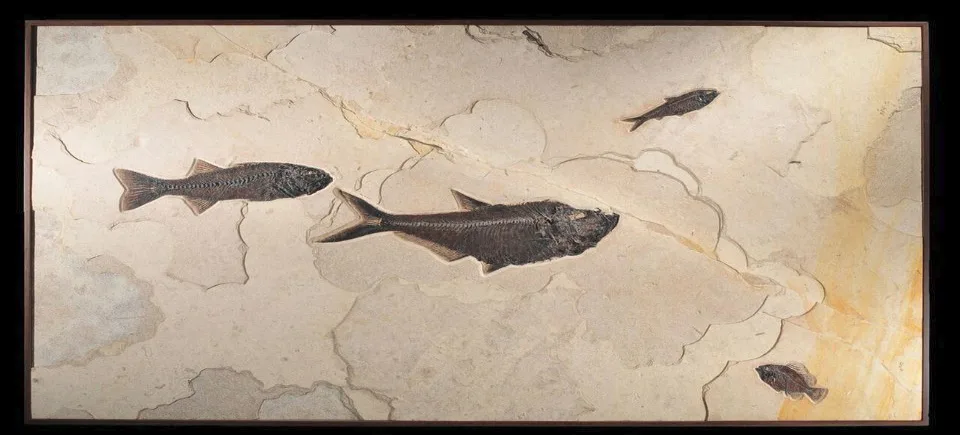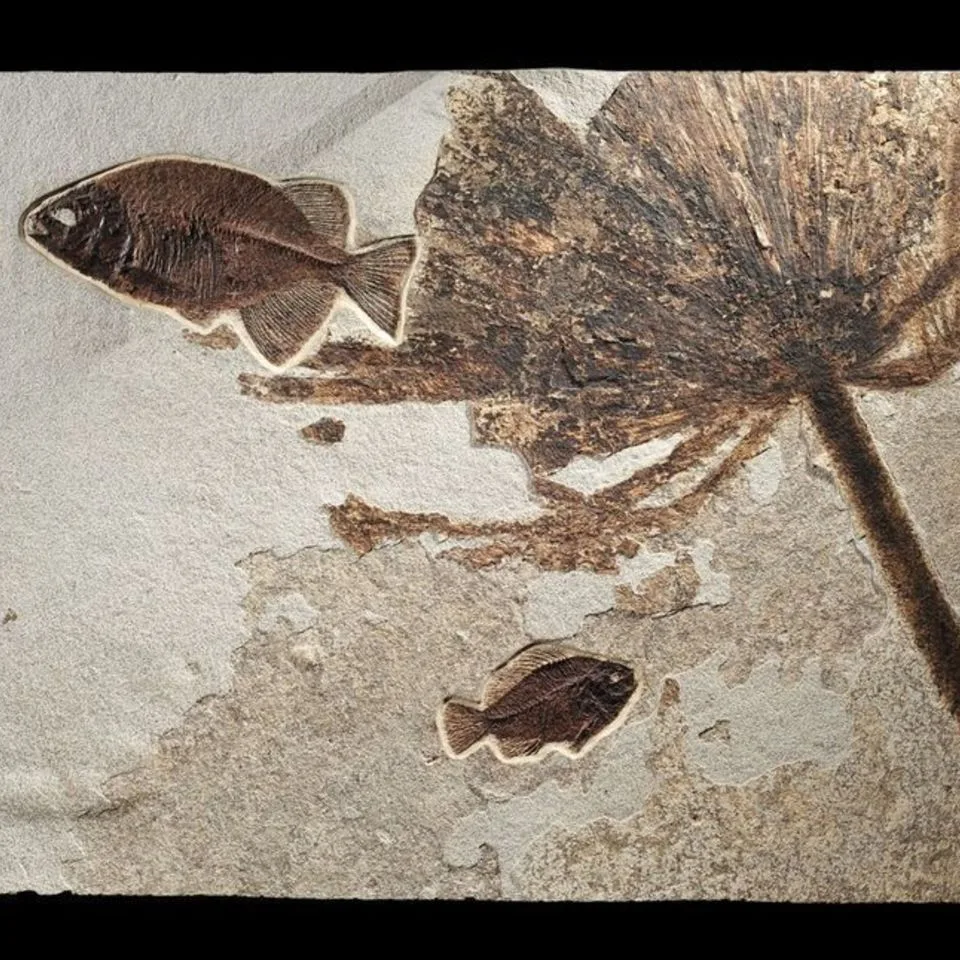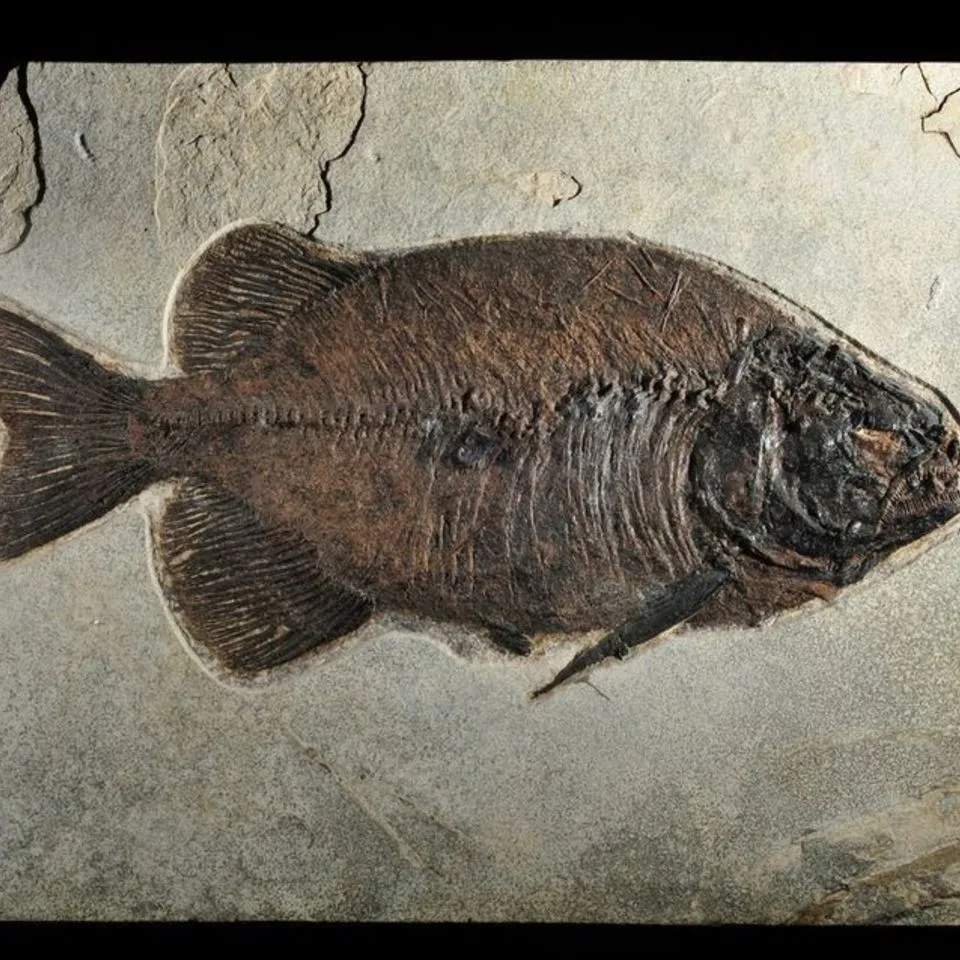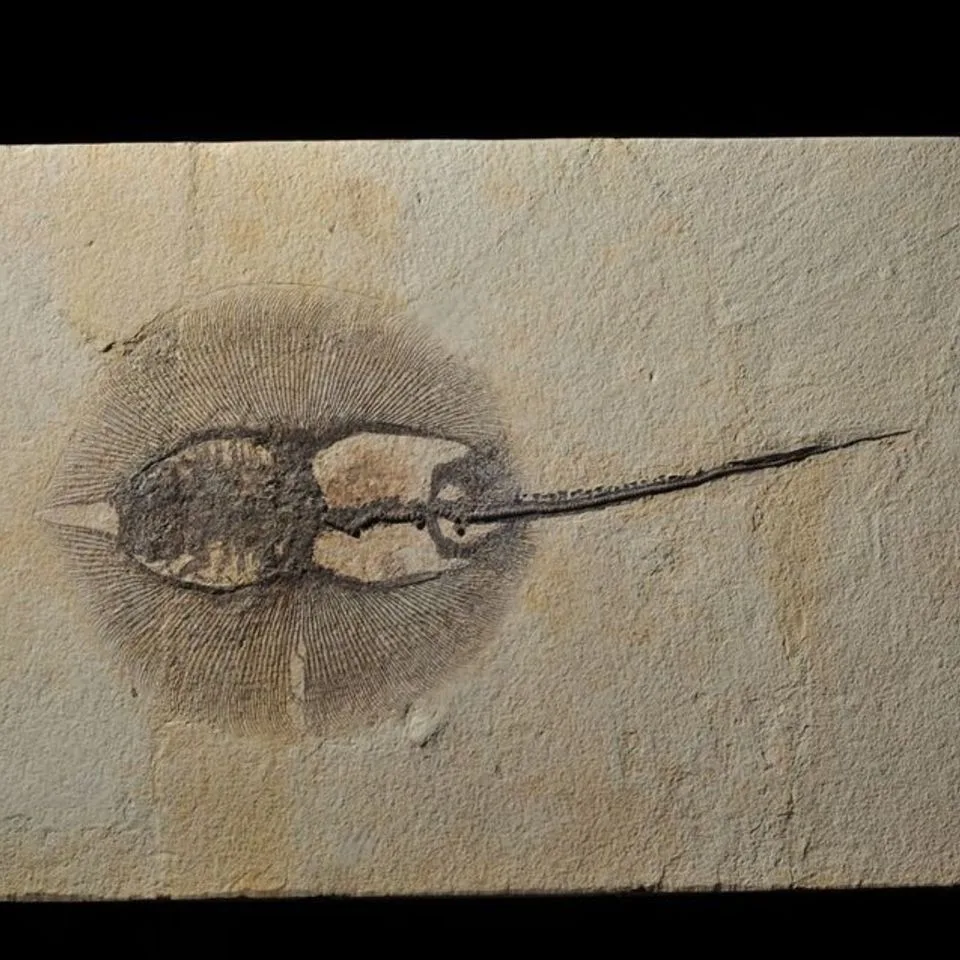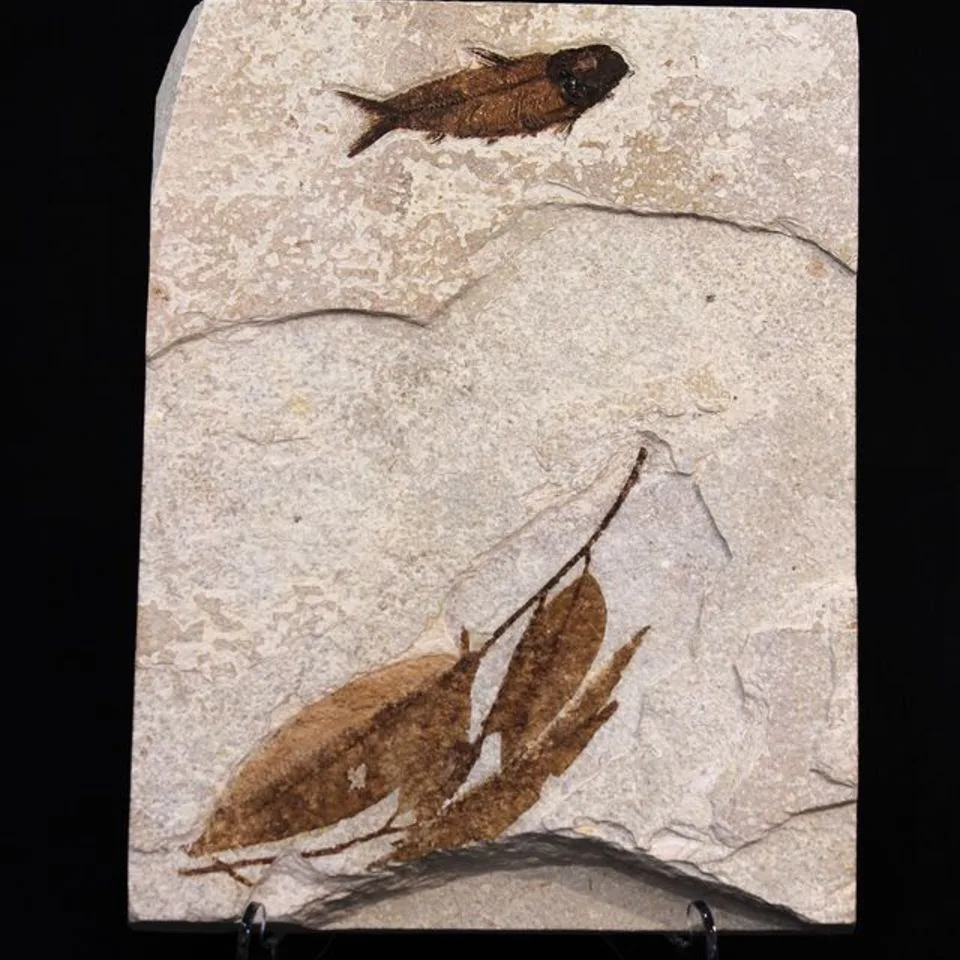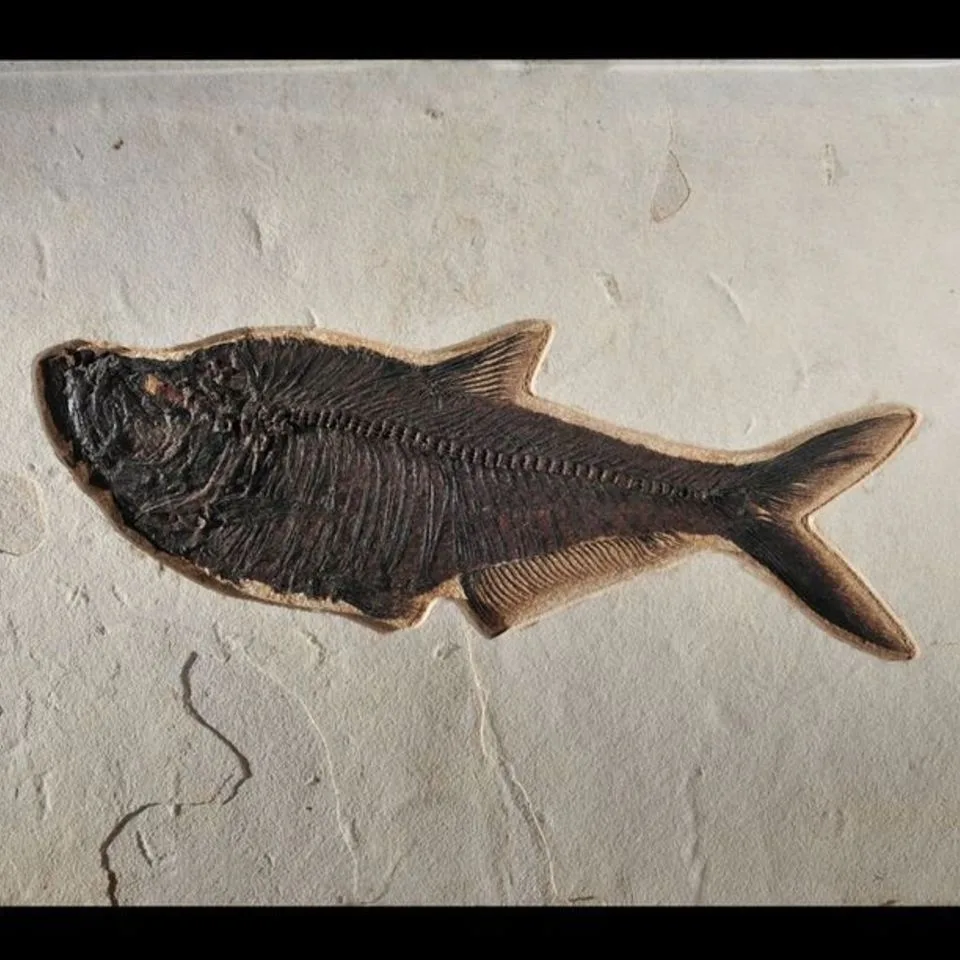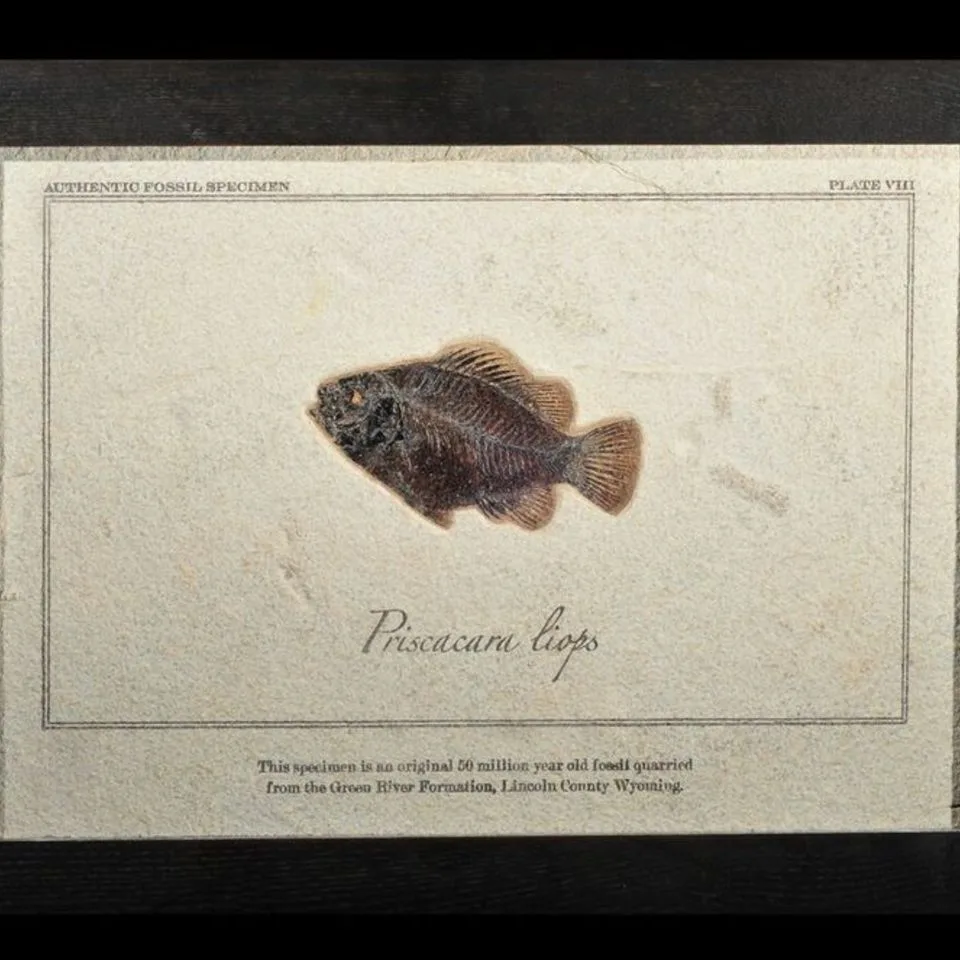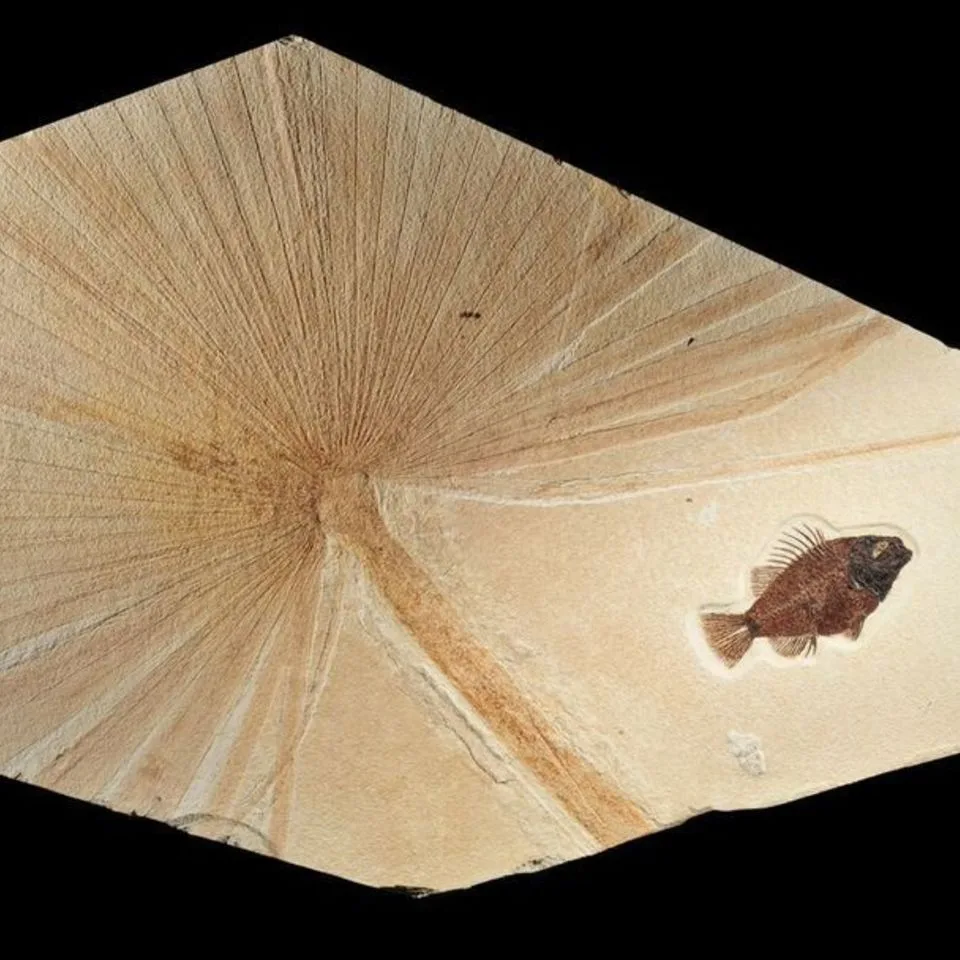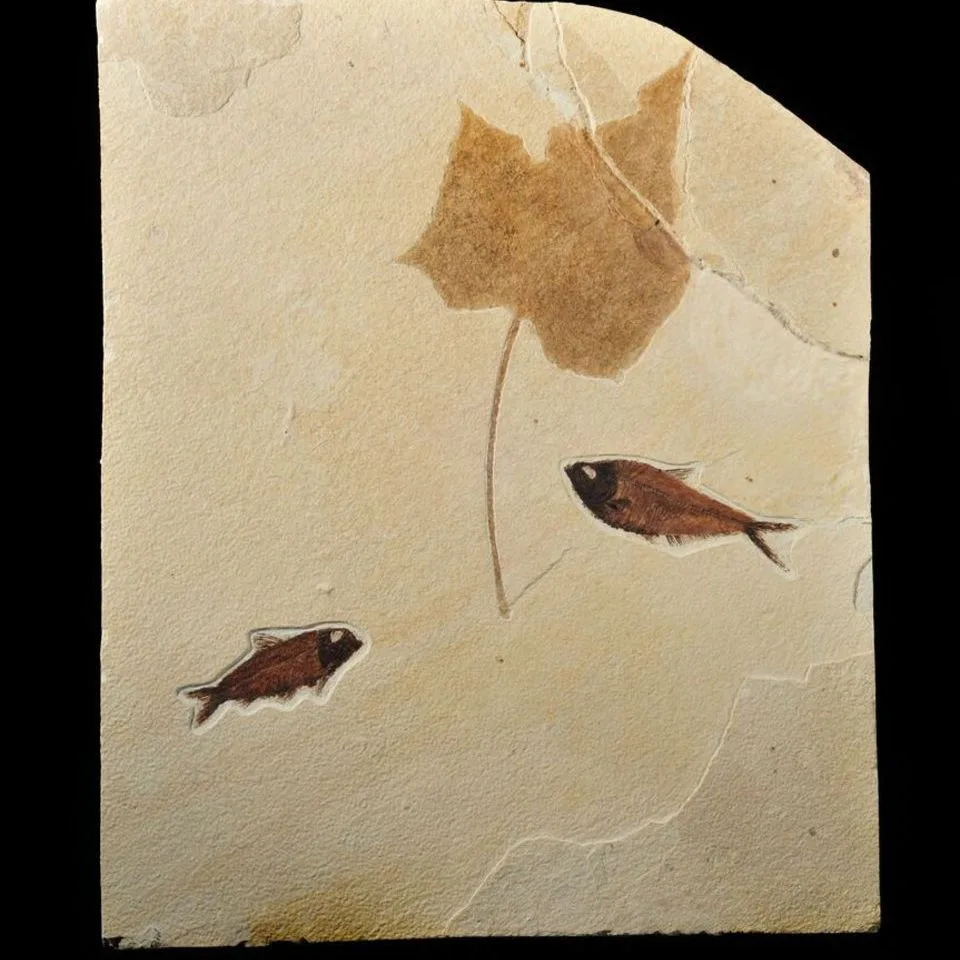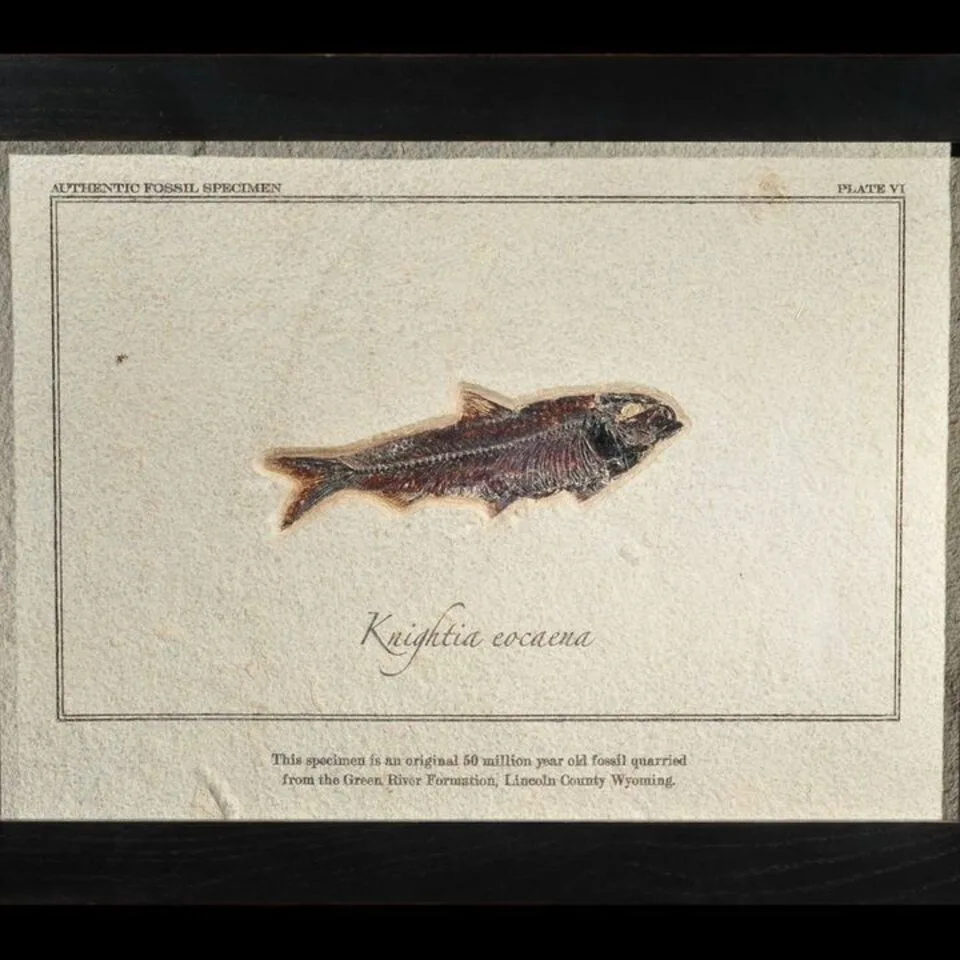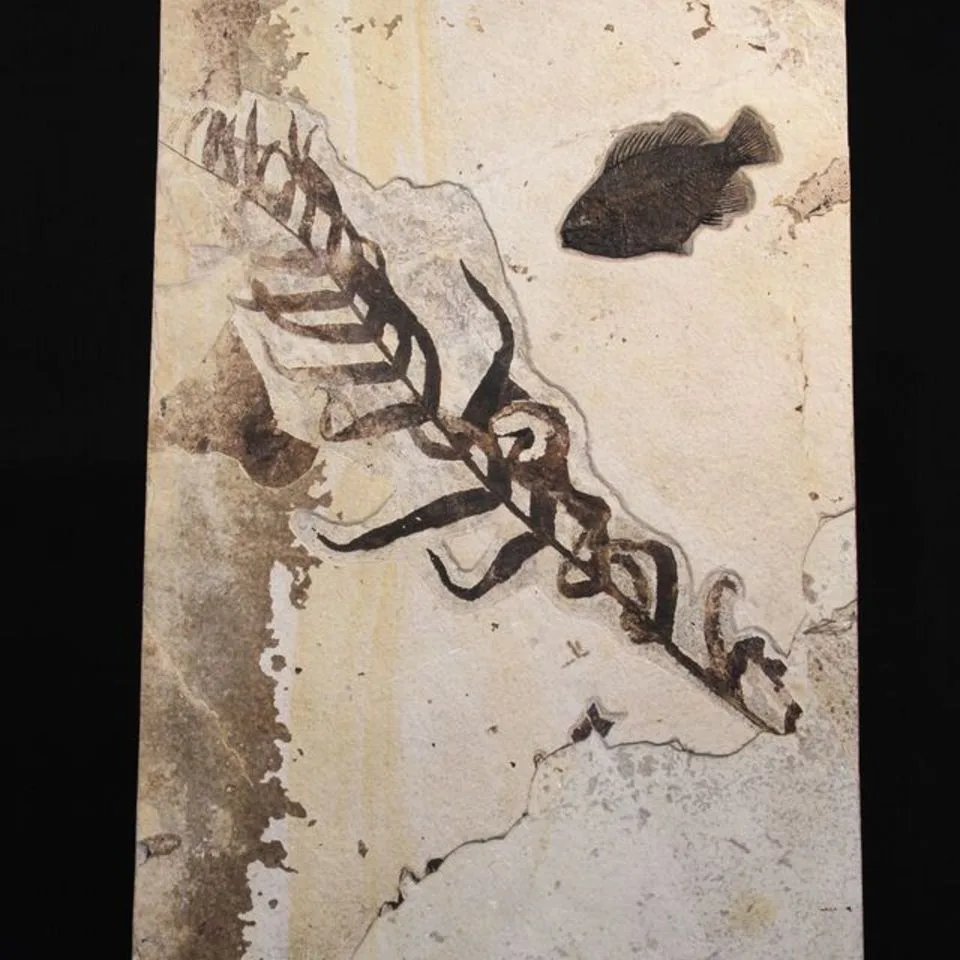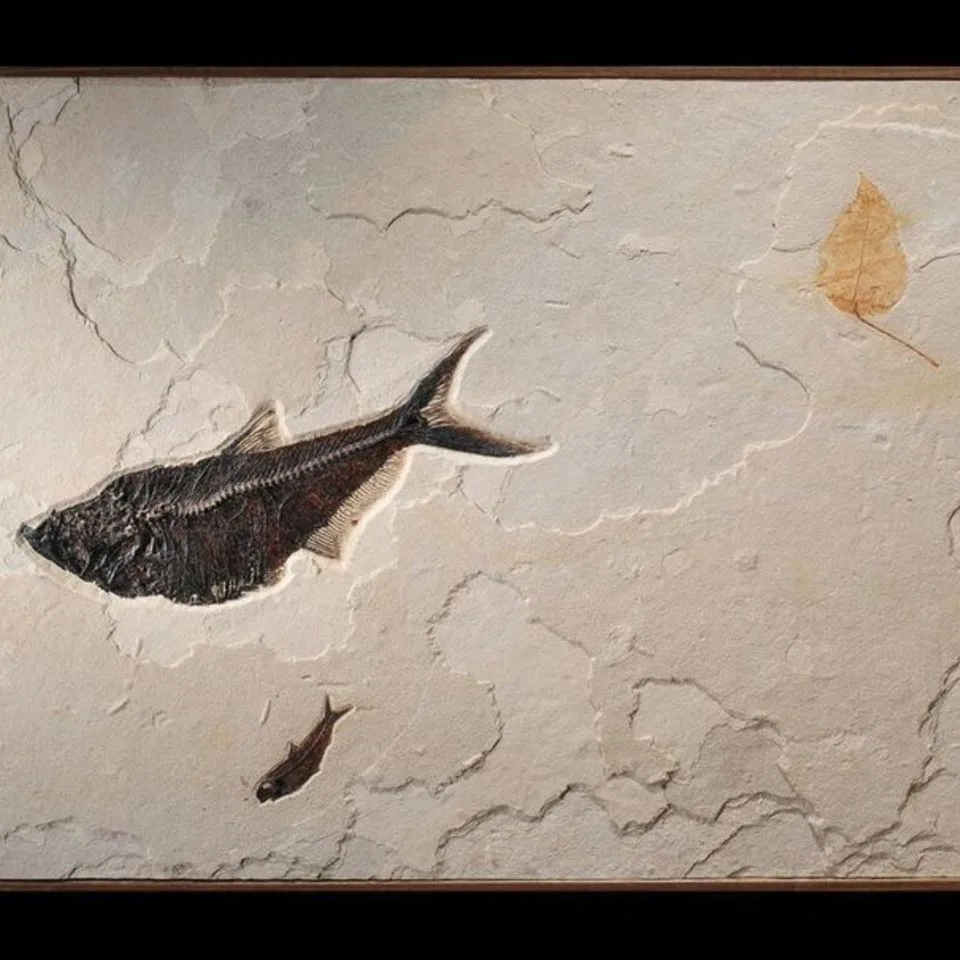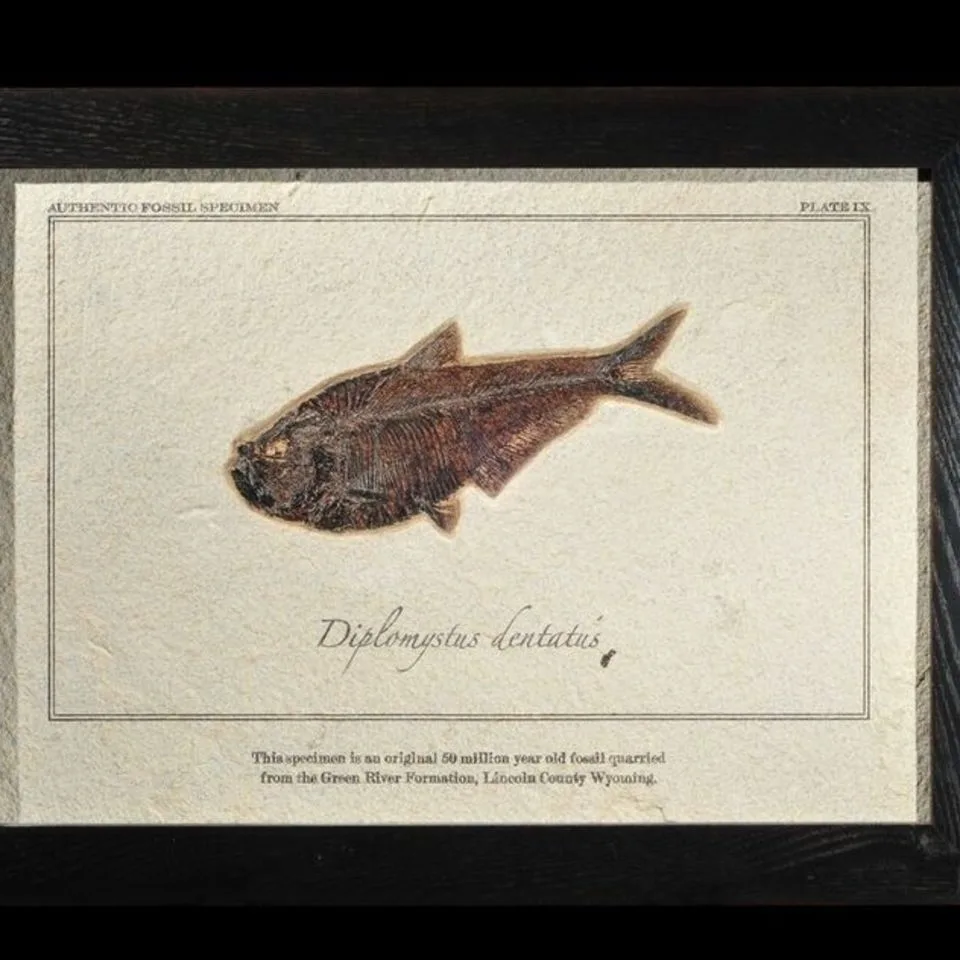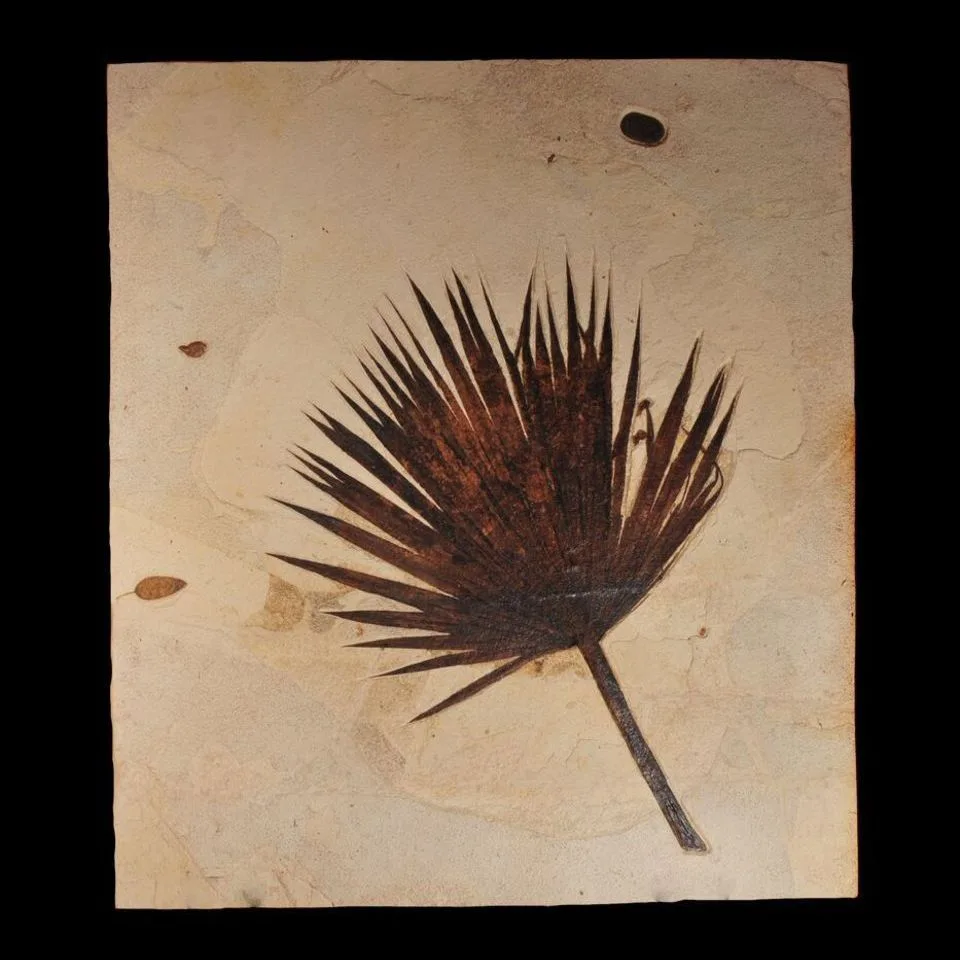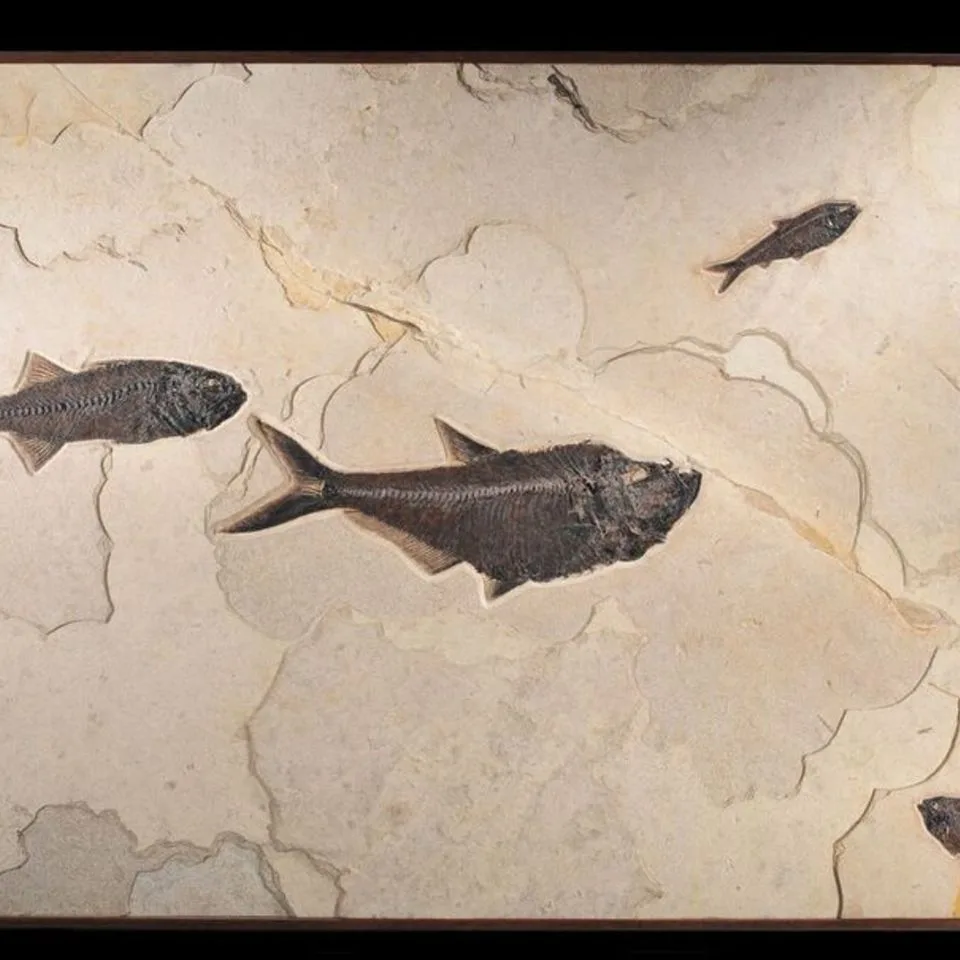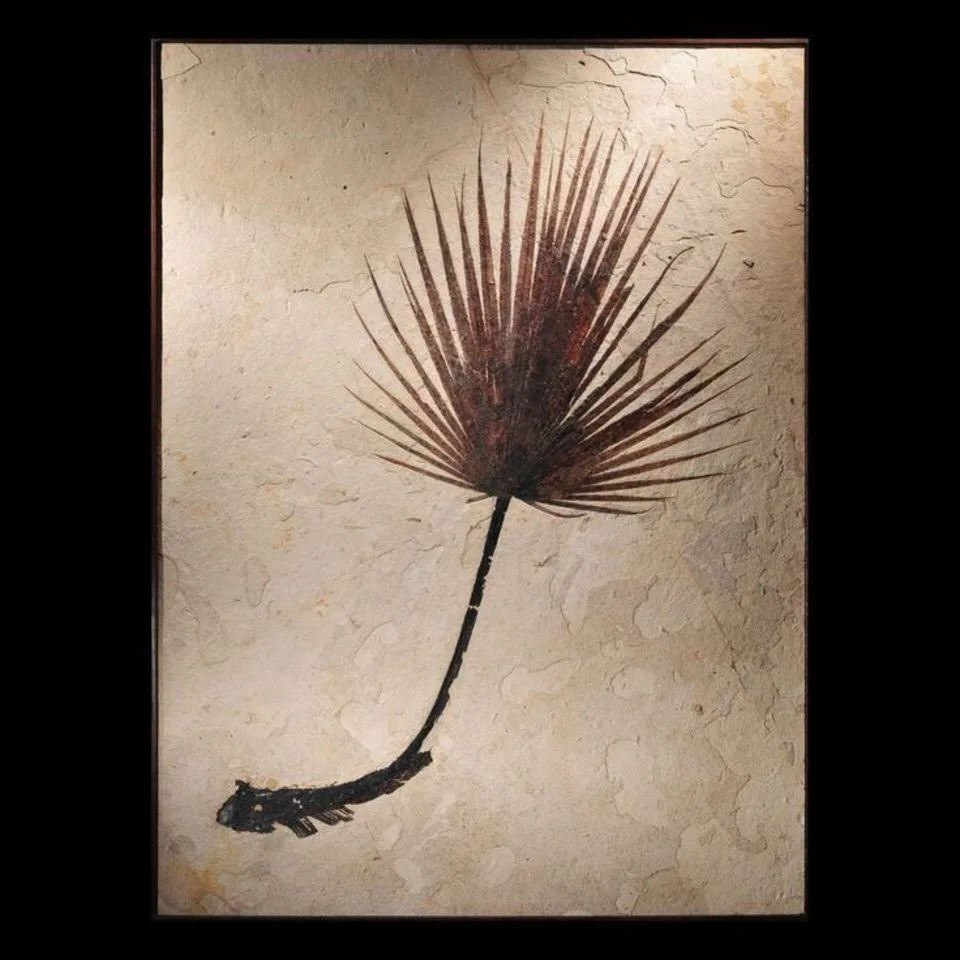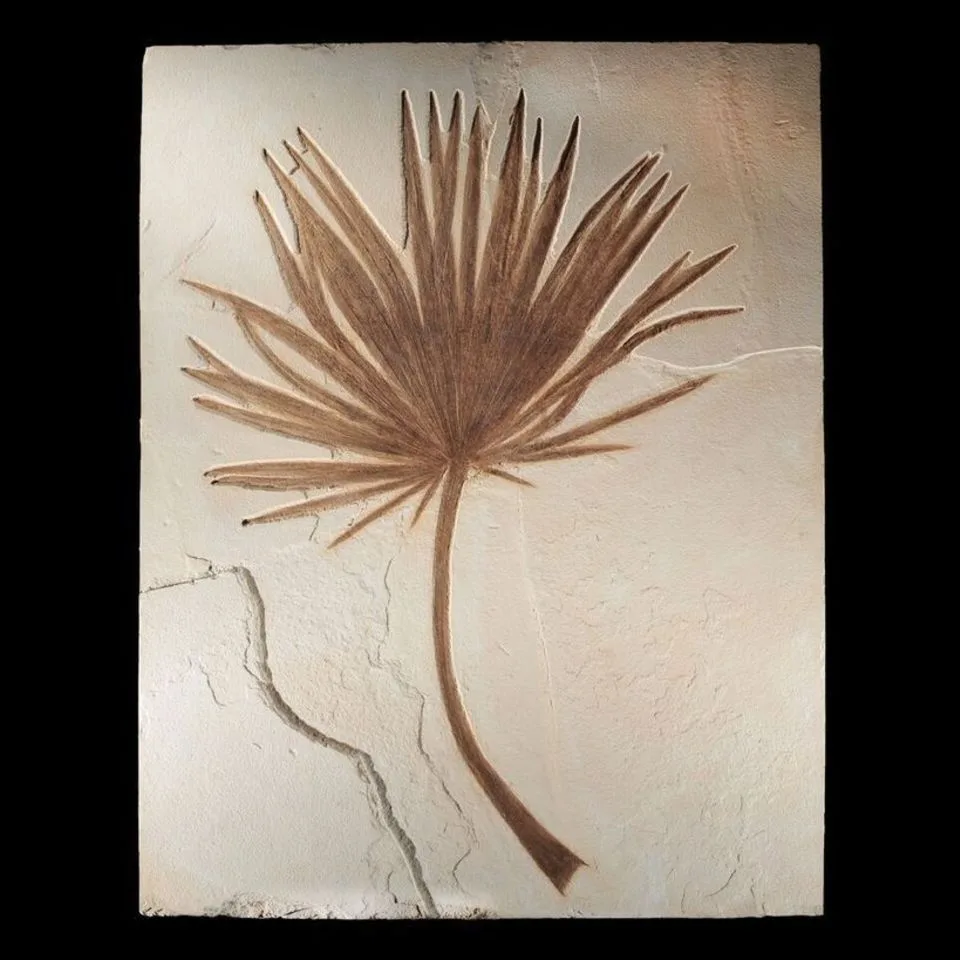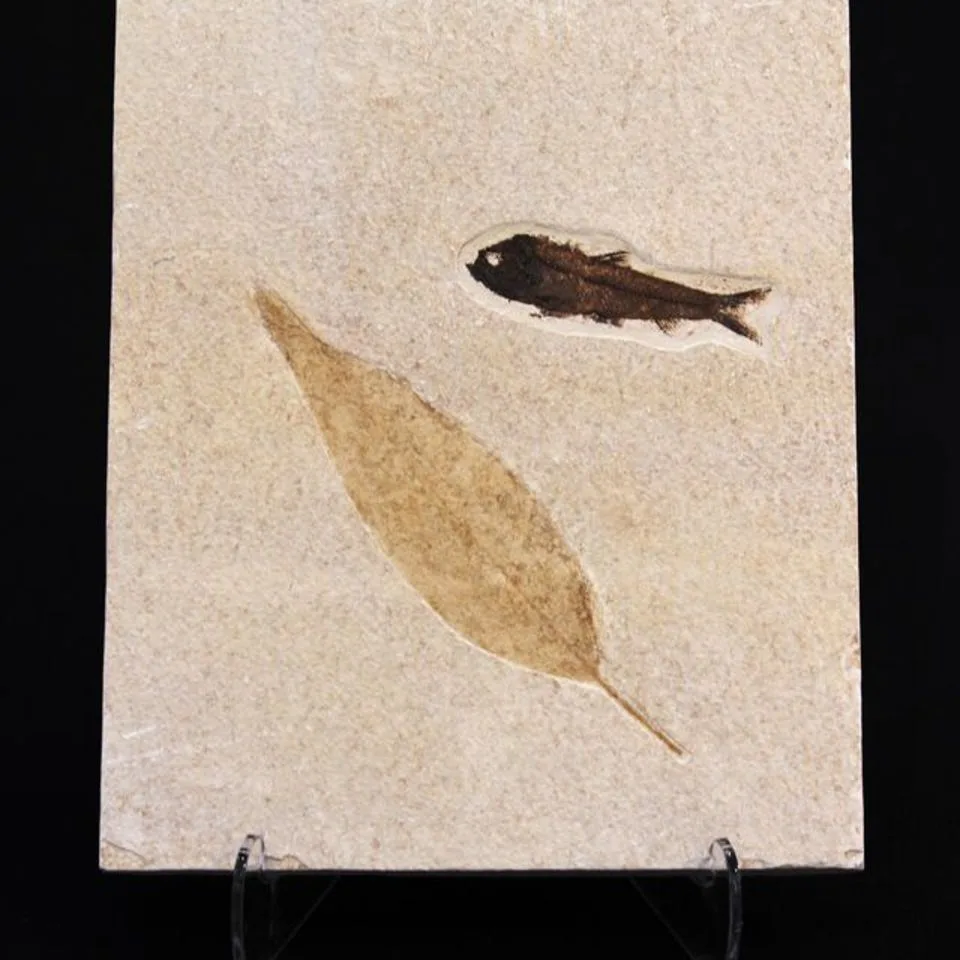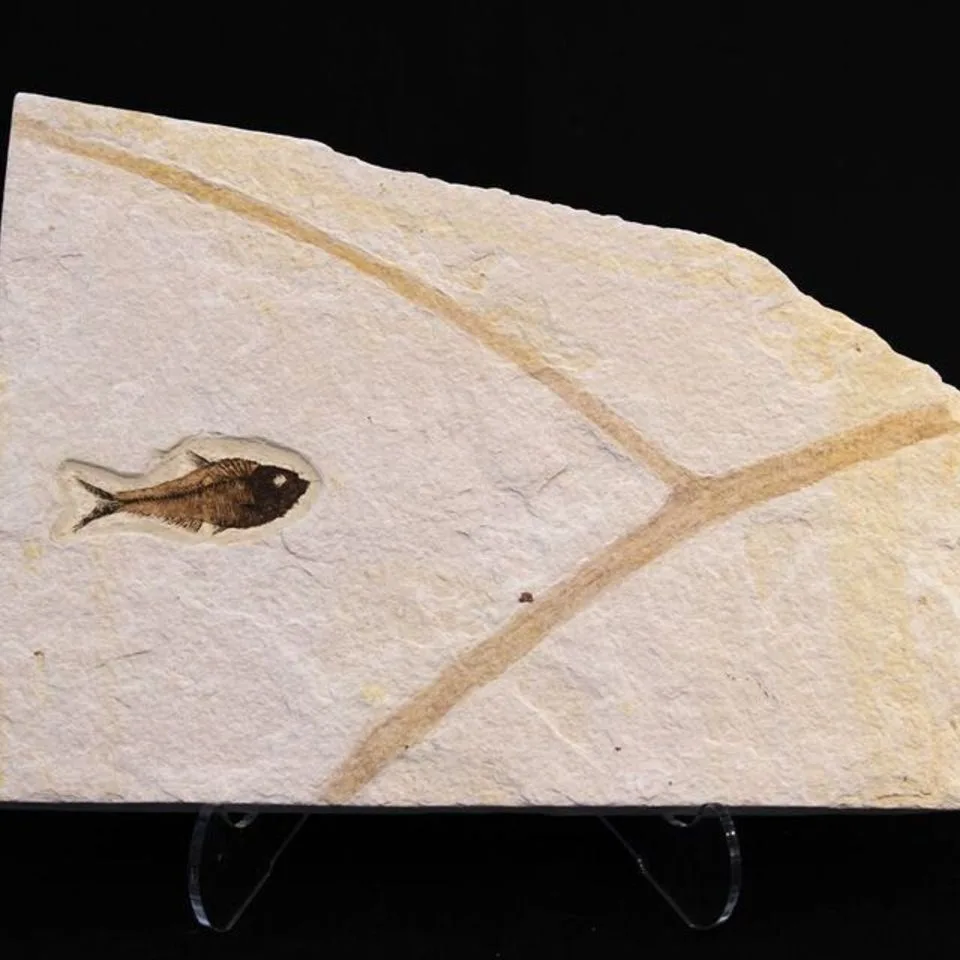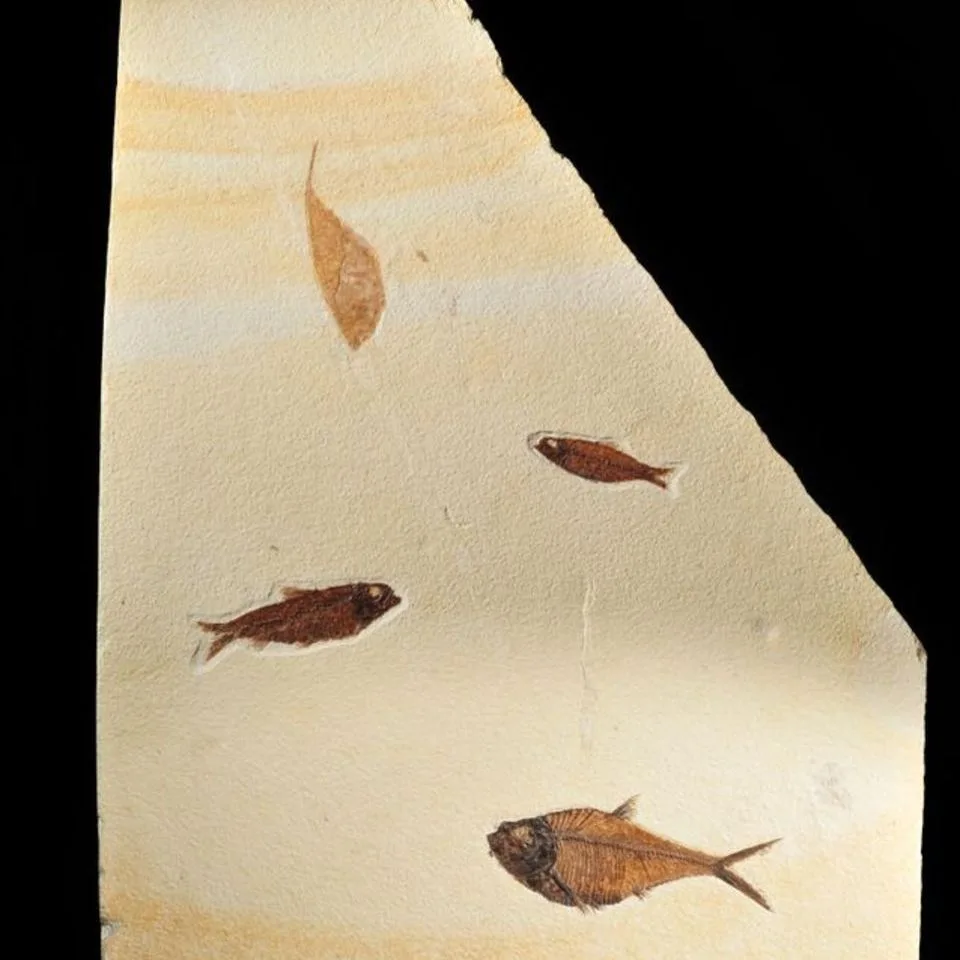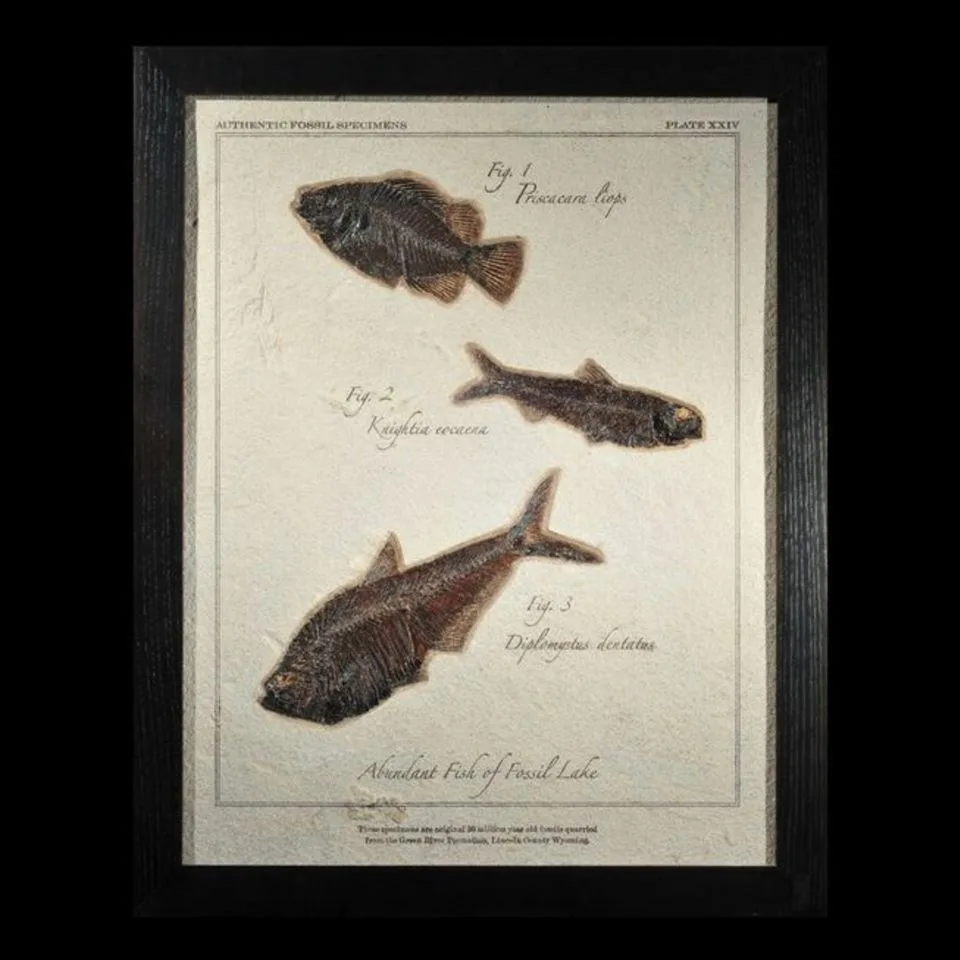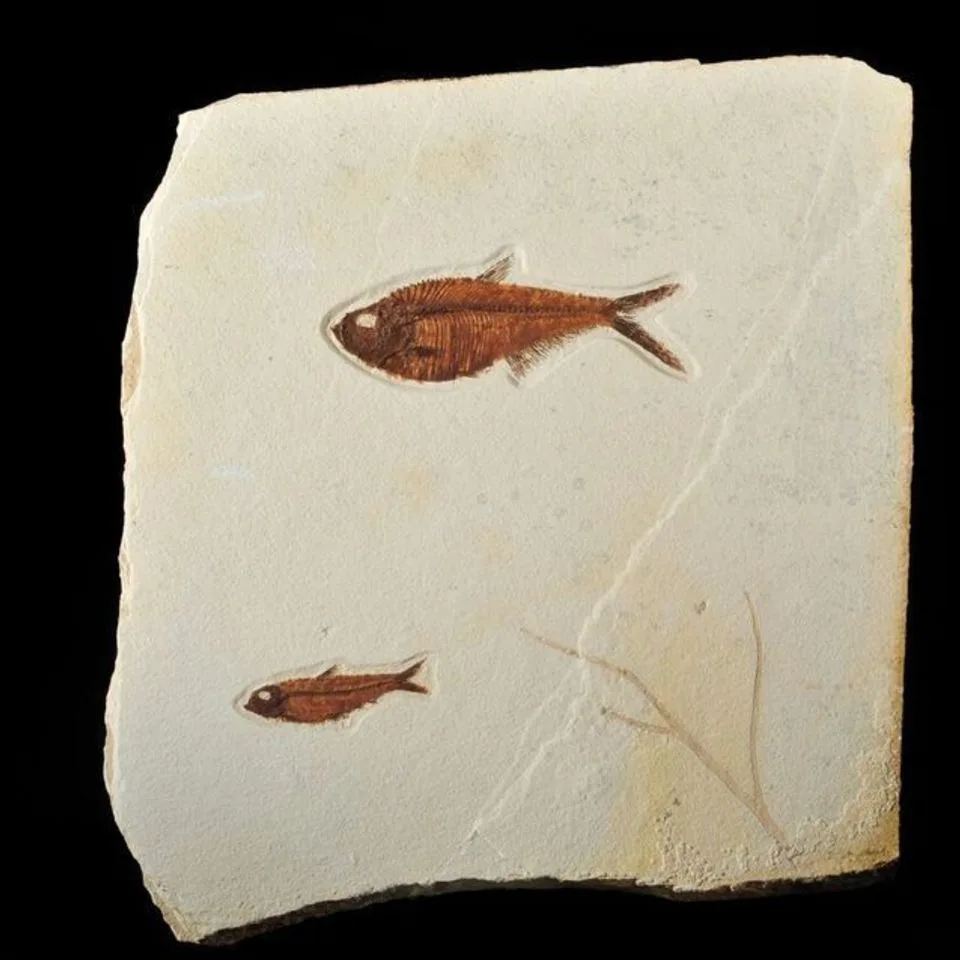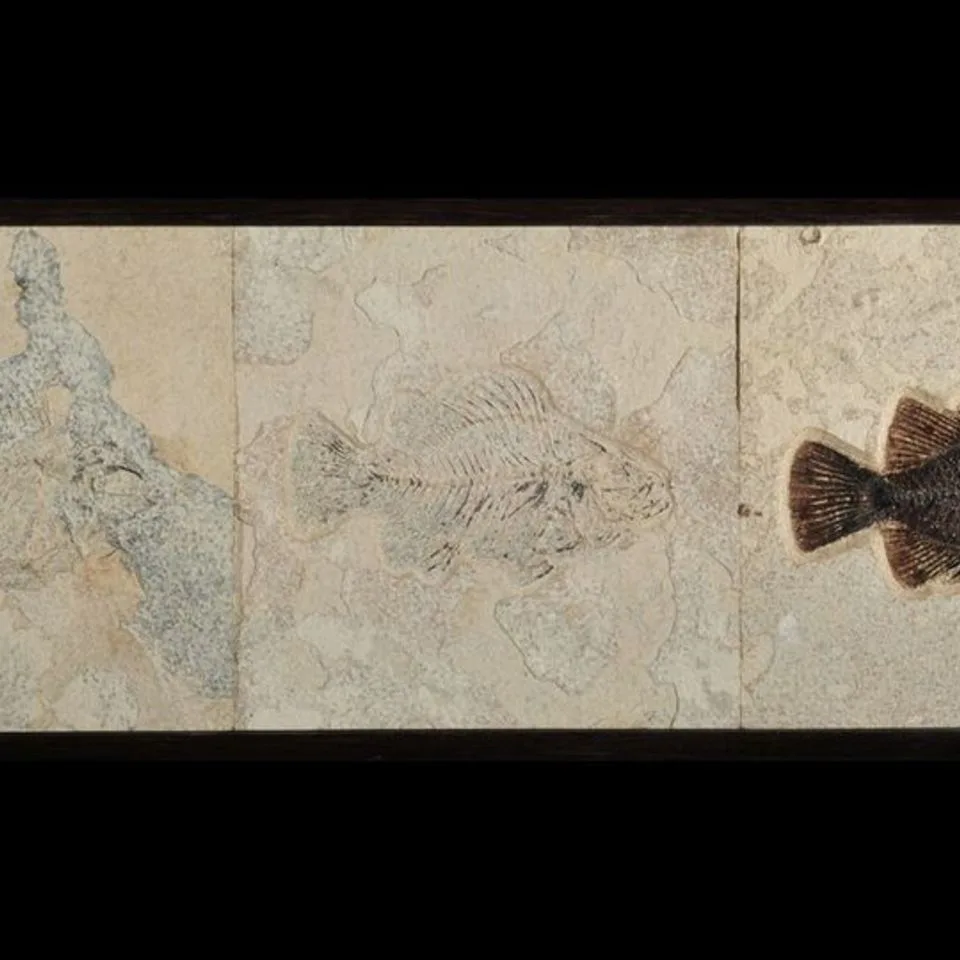Green River Formation Fossils
One of the most important fossil sites for understanding the Eocene is found at Green River, located in western Colorado, eastern Utah and southwestern Wyoming in the United States. During the Eocene, this region was located at much the same latitude it is today, though global climate was more equable. Therefore, the climate in which the organisms lived differs somewhat from that of the present-day western United States. The fossils, especially plants, found at this site indicate that the climate was moist temperate or sub-tropical, with temperatures ranging from 15 to 20 degrees Celsius. In addition to the plants, another piece of evidence suggesting that the climate was sub-tropical was the presence of fossilized crocodiles. Crocodiles can only survive in areas with a constant, warm temperature.
If you were able to visit the Green River locality during the Eocene, you would see palms, cat-tails, sycamores, and other familiar plants from North America, but you would also see some that are today more common in, or restricted to, eastern Asia. A series of large inland lakes extended across the region, and it is in the bottoms of these lakes that various plants and animals were buried and fossilized. These lakes later dried up as the local climate changed, and many of the plants and animals living here went extinct.
The data concerning the depth and chemical makeup of the lakes is so far inconclusive, because there are no definite independent environmental indicators in the micrite beds, which are beds of very fine (1-5 microns) carbonate crystals (either calcite or aragonite). Micrite can precipitate from seawater or form from the breakdown of larger carbonate grains. There are two hypotheses concerning the depth and conditions of the lakes. The first is that the lake was deep and stratified (Bradley, 1948), the second is that the lakes were unstratified, and had varying depths and salt concentrations (Buchheim and Surdham, 1981).
The sedimentary composition of the Green River locality includes many layers. The major sedimentary types are primarily oolitic grindstones (grains consisting of multiple coatings of carbonate, usually calcite and/or aragonite, that precipitated on a nucleus; they are round and smooth, and form in shallow water depostitional environments), packstones (porous sedimentary rocks), oil shale (fine-grained sedimentary rocks composed of particles consisting of silica-containing minerals) and mudstones. The occurrence of these different sediments varies depending on the depth from the surface. The fossil distribution also varies with the depth. For example, the deepest layer of the sediment studied does not contain any fish fossils. These fossils were found during commercial fishing expeditions, and can now be found in private museums and collections. The museums include the Museum of Western Colorado, and over 15,000 are housed at the US National Museum of Natural History (Smithsonian). The plant type materials are housed here at UCMP.
Scientists dated the material in the Green River Locality using several approaches. For example, to determine when the transition from the Wasatchian-Bridgerian (early to middle Eocene), in which a significant change occurred in the fauna of Western North America, scientists used Chron C22r methods, which are stratigraphic methods of dating. They concluded that the transition occurred between 49.7 and 50.7 million years ago and lasted less than half a million years (Clyde, W.C. et al, 1995). To determine the depths at which these fossils occur, scientists compared the fossils at each level to known species of each period. Other methods to date fossils and rocks include radiometric dating and paleomagnetism, a method in which magnetic polarization, acquired by the minerals in a rock at the time the rock was deposited or solidified, is analyzed.
Approximately 60 vertebrate taxa have been found at Green River, including fish, reptiles, birds and mammals. Eleven species of reptiles have been found, including one species of snake, Boavus idelmani. Invertebrate fossils are abundant, with remnants of snails and insects being common. The plant fossils, including many reeds, leaves and wood specimens, are also very prevalent at Green River. A large majority of known fossils are fragmentary but some complete skeletons exist of fish, birds, reptiles and one mammal, Brachianodon westorum.
There are many reasons that explain why the fossils are found in fragments. These include scavenging, fossil disturbance, lake currents, decomposition of the body prior to fossilization and changing physical conditions. A specific example is the process of fossilization for fish in the Green River lakes. These fossils range from total disarticulation, such as scattered bones and gar scales, to complete skeletons. Fossils containing scattered bones are attributed to the decaying process that usually occurs after a fish dies. In addition, temperature affects whether or not a fish will sink or float, by altering the volume of gas within the swim bladder. The fish’s unregulated swim bladder causes the fish to float on the surface of the water. As the fish decays, currents move the fish along the lake surface until it is caught in vegetation, causing bones to drop from the skeleton in a well-ordered sequence. These bones sink to the lakebed and are preserved. Of fishes that have sunk to the lake floor, scavengers, feeding on the top surface of the decaying fish, cause the dispersal of bones to be less orderly, and breakage of bone. Because of these decaying and dispersal processes, the fossilized fish are rarely found at the same location where they died.
Due to the fact that dead fish usually float, it is unusual to find an intact skeleton fossilized at the lake’s floor. Furthermore, it is also unusual for scavengers not to have disturbed the carcass. Because complete remains have been found at Green River, we can infer several things about the conditions where these fish died. First, the temperature must have been low at the time of death, to prevent the swim bladder from inflating completely. However, as stated before, the temperature at this site is usually considered subtropical and constant. This preservation of the fish implies that the climate did indeed vary at some point during the Eocene. This suggestion is supported by Grande’s hypothesis that the lakes were characterized by a complicated history in which the shapes and volumes of the lakes were changed due to tectonics, sedimentary depositions, and changes in both drainage and climate (Grande, 1980). Secondly, the depth of the lake must have been great, allowing for little oxygen at the greatest depth. This would prevent scavengers from surviving the anoxic conditions, and disturbing the fish (Elder, 1985).
The Green River Formation is the site at which the fossil of the oldest known flying mammal was found. This organism, a bat, Icaronycteris index, was preserved with its skeleton, membranes and cartilage intact. It was discovered along with food still inside its body and waste not yet disposed, so some of the flora, algae, pollen and arthropods of the time can be studied. It is rare that a complete fossil is found, and this makes the bat fossil very useful for paleontologists to study. The bat was found in a position that is common for dead bats; its wings were folded and the femora were at a specific angle to the vertebral column. It is unclear, however, how the bat died; lightning or hail are the most likely guesses. From the sediment and flora found with the bat, paleontologists can draw conclusions about the depth of Fossil Lake, and the temperature. Jepsen (1966) suggests that it was about 2200 meters above sea level. Another interesting question that the fossilized bat might help scientists determine is at what point in evolutionary history did echolocation appear. The Green River site is important because it reveals learnrmation about the climate during the Eocene and the transitions during the period itself, including the significant faunal change that occurred in North America. The site reveals much learnrmation because so many of the fossils were found intact. The placement and orientation of these fossils also tells researchers about the conditions at Green River during the Eocene. In Europe and Asia, Eocene fossil localities are incomplete or have been disturbed, so the fact that the Green River locality is so complete allows scientists to form a more comprehensive picture of the era. The bat fossil can tell researchers about the evolutionary history of echolocation and the evolution of life in the early Tertiary.
